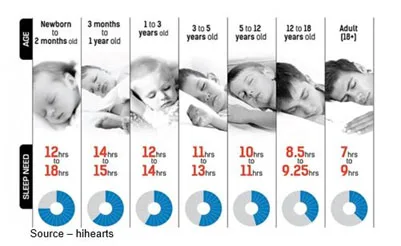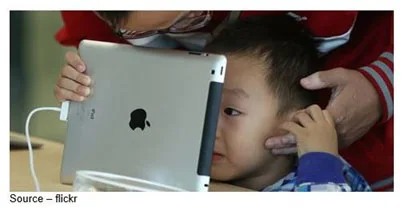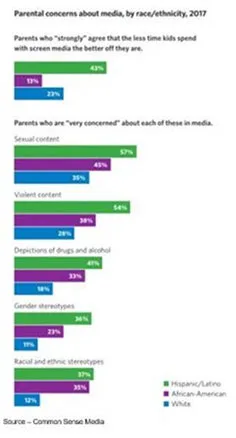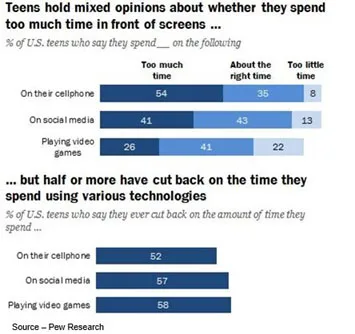Screen Time for Gen Alphas, Gen Zs … Depends

We read that kids were unimpressed with screen-addicted parents.
There’s not much parents do impresses kids!
Tell our son right, he’d say left … up, down … top, bottom.
Nothing impressed the little ****!
And the generation behind his, Gen Alpha, is even tougher to impress.
They’re already tech heavy and extremely connected. The oldest in the group is only nine +– and they are the ones who will shape our future.
Alphas got their start in 2010, when millennials decided it was time to have kids at a rate of 2.5 million births per week. And they’re the first generation to be born 100 percent in the 21st century.
The most difficult thing about being a parent is trying to figure out when it’s the right time to let them have a device (computer, tablet, smartphone) and how much screen time they should have.
What do you do when your two-year-old throws a tantrum when you take away “his/her” device; or, you catch your seven-year-old watching YouTube all night or, your nine-year-old says she/he “needs” a smartphone because “everyone else” has one or, your 10-year-old has to play adult-level video games like all his friends or, your 14-year-old is constantly on Snapchat and Instagram?

Not exactly what you thought being a parent would be like!
A tech CEO friend and his wife had strict limit their kids’ screen time until they became “responsible” teens.
They banned devices on school nights for their four children – computers for schoolwork were an exception – and established time limits on weekends.
While most parents cave when the kids need tablets, smartphones and computers day and night to survive, Apple’s Steve Jobs and Microsoft’s Bill Gates both emphasized that they limited how much technology their children used at home when growing up.
Chris Anderson, former editor of Wired Magazine said his wife and he had firm time limits and parental controls on devices their five children had access to growing up.
He said he had seen the dangers of technology and that he didn’t want it to happen to the kids.
The dangers include exposure to harmful/inappropriate content like pornography, hate messages and bullying.
Perhaps one of the worst is device addiction that way too many adults suffer from – constantly checking the device, cold sweats when it’s not immediately at hand, checking the first thing in the morning. You know, that void of not being connected.
Anderson had one rule that could never be broken, ever; “There are no screens in the bedroom. Period. Ever!”

One thing everyone knows is that kids need sleep. Most agree that devices mess it up.
Give a person – any age – a book and the mind tells the individual when it’s time to shut down.
Put a screen in front of them and they’re quickly disconnected from what really matters, what makes them nourished/enriched and grounded as a person.
Gen Zers and above think nothing of binging every segment of a new show that’s released on Netflix or other OTT services – 10, 15 hours’ worth of entertainment at a single sitting.

Our behind gives out after even the best 108-minute movie; but give a kid a screen with Sesame Street or Mr. Rogers, and they’re good for the day.
The American Academy of Pediatrics recommends limiting screen use to one hour a day for children 2-5 to one hour a day for older youth to make certain media doesn’t reduce adequate sleep, physical activity and personal/group interaction.
But it all depends on the quality of content and the amount of involvement parents have with their children during the screen time.
Parents – or any adult – will readily agree that screens, especially smartphones, have erased the line between work and home to the point that there is no such thing as “off the clock.”
People check their smartphones 150 times a day (every six minutes) and young adults send an average of 110 texts per day.
Psychologist Lisa Damour wryly observed that if you wanted to invent something that would undermine sleep and consume time for kids, or people of any age; the screen, especially the smartphone, would be at the top of the list.
We know you’re a good parent and set rules for your kids. Researchers at ChildWise reported that three in five have rules or limits on the use of at least one of their devices.
The only problem was that most of the kids said parents weren’t real good role models on how/when they used their devices, noting parents seemed inattentive, distracted and even addicted to the devices.
One teen said that her parents were constantly on their devices and “ignore me when I talk to them and shout and get angry at me if I mention putting them down”.
Another told researchers: “My mum will tell me to get off my phone and go to bed, then she plays on Candy Crush for two hours.”
So much for leading by example!

How hooked are millennial parents?
In a recent podcast, Shelly Palmer, an industry commentator, recently made an on-air offer of $100,000 to anyone who would give up their smartphone for a year.
Last we heard, Shelly’s money is still in his pocket!
We’re pretty sure he knew it was a safe bet that no one would take him up on it because screens, especially smartphones, are an integral part of every family’s connection with the world around us.
For children of all ages, screens – TV, tablet, smartphone – shouldn’t be viewed as a digital pacifier or as a way to pass the time so parents can get things done, do other things.
Screen time for kids of any age is a complex issue that requires more thought than simply using the device as a babysitter or vowing to avoid screen time entirely.

Research firm CommonSense Media found that 42 percent of children ages 0 to 8 have their own tablet, up from seven percent in 2014, while about 12 percent use a smartphone.
They spend an average of more than two hours a day using screen media.

While parents establish usage guidelines, use software to monitor their online activity, block selected sites, monitor incoming texts/calls and limit time spent on certain online activities/media; they are still concerned about their online media activity.
In addition to active monitoring/controls, parents also discuss acceptable and unacceptable online activities:
- 94 percent talk to their children about what is appropriate to share online, 40 percent frequently
- 95 percent discuss appropriate online content to view, 39 percent frequently
- 95 percent have talked about appropriate content – TV, music, books, magazines, social media – to consume; 36 percent frequently
- 92 percent have spoken about appropriate online behavior, 36 percent frequently
Despite promises to police inappropriate media, parents would be surprised (probably appalled) at the content that reaches their children.

Kids are learning to swipe and scroll their devices earlier.
A lady friend told us that her three-year-old picked up her iPhone and called his grandfather in Minnesota.
“It was almost instinctive, second nature for him,” she recalled.
Mobile is becoming a bigger part of young people’s life; so even if they don’t have a TV in their room, the smaller devices make it possible for them to consume their media where parents are less able to monitor or manage what they consume and how long they are on instead of being asleep.
The solution?
Have firm, realistic rules as to when they can use their devices; actively monitor the usage; don’t give the younger kids (Gen Alphas) total control over their devices; and don’t allow the devices to be charged or stored in their bedroom.
Your kids, your rules might vary.
If it’s any consolation, there’s no right answer; just a lot of theories, studies, advice.
As the ownership/usage of screens – especially smartphones– spreads across the globe, there are many organizations that view the lack of mobile devices or the ability to share one with others is holding people back, especially in emerging countries (https://pewrsr.ch/2OdF09b).
It’s true.
Global access to data, information and educational content needs to be made available to help these people actively participate in today’s advancing world.
But we’re talking about children/young adults in industrialized countries.
You know, guys/gals who told Pew Research that they have access to a smartphone (95 percent) and are on the internet almost constantly (45 percent).
So how do they use this vital communications tool?
- 90 percent use their smartphone just to pass the time
- 43 percent use their phone to avoid interacting with people
- 54 percent of teen girls use it to avoid social interaction, 31 percent of boys
While millennial parents sweat bullets trying to figure out how they can best manage their kids’ screen time, maybe they should simply ask them.

Pew Research found that roughly half of the teenagers interviewed worried they were spending too much time on their phones (https://pewrsr.ch/2KMwWuf).
A lot of them said they saw how much the devices were affecting their parents and well…
Seventy-two percent said they continuously check for messages. Many said the first thing they did when waking was grabbing the phone and four-in-ten said they were anxious when they didn’t have their phone with them.
Fifty-six percent said the absence of their phone made them lonely, upset, anxious.
Feel familiar?
53 percent of the teens who said they spend too much time on their phones cut back while 55 percent who said they spent the right amount or too little time with their devices did try to limit their phone usage.
Girls often said they spent too much time on social media (47 percent vs. 35 percent) while boys were 4X more likely to spend too much time playing video games (41 percent vs. 11 percent).
Surprisingly, 17 percent said they were relieved/ happy when their phones weren’t around.
 Those youngsters/teens who watched adults struggle with their phone addiction probably thought to themselves (without saying it out loud) exactly what The Tramp said, “Awkward ass.”
Those youngsters/teens who watched adults struggle with their phone addiction probably thought to themselves (without saying it out loud) exactly what The Tramp said, “Awkward ass.”
Maybe because they were born into a device-connected world, they can also take it or leave it!
# # #
Andy Marken – [email protected] – is an author of more than 600 articles on management, marketing, communications, industry trends in media & entertainment, consumer electronics, software and applications. He is an internationally recognized marketing/communications consultant with a broad range of technical and industry expertise–especially in the storage, storage management and film/video production fields. He also has an extended range of relationships with business, industry trade press, online media and industry analysts/consultants.